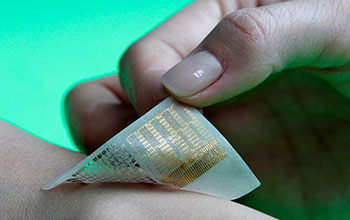| The idea is that the Silk lightbulb will give you energy boosting blue light in the daytime and warm light in the evening to help you chill Our well-being and mood throughout the day is largely influenced by the light we are exposed to. Following this principle, a start-up called Saffron has developed the prototype of a LED light that can sync our internal clock to the natural shifting color spectrum of the sun. The light is called Silk and the designers claim it can improve our performance and sleep patterns by giving us get the right kind of light for each time of the day. The programmable LED bulb emits light that is tailored to the user’s internal circadian rhythm, that is, our physical, mental and behavioral changes over the course of a 24-hour cycle in response to light and darkness. This is what evolution has programmed us to to do, but artificial lights, including digital screens, disrupt that balance. The 800 lumen bulb, which is compatible with E27 sockets, has two banks of LEDs, one of cool colored LEDs and a bank of warmer LEDs. For a full daylight experience, only the cool colored LEDs will be powered on. It is also possible to get the two color banks to mix and strike the right balance between warm and cool. At night, only the warm LEDs will light up. The idea is that the Silk lightbulb will give you energy boosting blue light in the daytime and warm light in the evening to help you chill and have more restorative sleep, unlike conventional lights which the designers say are wrong half of the time. To set up the light, all its takes is plugging in a bridge circuit and setting up Wi-Fi details (it uses the Zigbee protocol). The system syncs with local sun movement information online and automatically adjusts the lighting to suit. An existing light switch can be used to control the Silk bulb, with no modification required. This is thanks to a feature called nClick, where the number of clicks on the switch tells the light what to do. With one click, the user activates the normal bulb function, two clicks could change the color temperature and three clicks might set it to fade off over time. For more advanced control, the Silk Light app (iOS and Android) enables the user to create their own zone-based schedules and switch behaviors to meet the lighting needs of a particular situation, such as a yoga session or a dinner party, for example. People who suffer from SAD (seasonal affective disorder) may well benefit from this customizable lighting scheme. The Silk Light team has launched a Kickstarter campaign to raise funds to manufacture the LED lightbulb. As of writing, the early bird package of three Silk bulbs plus one Silk bridge is still available for a pledge of US$99. If all goes to plan, estimated delivery is set to start in January 2016.
Source:Saffron, Kickstarter
|










